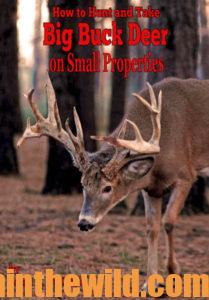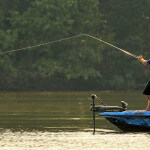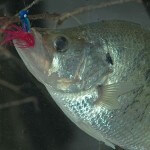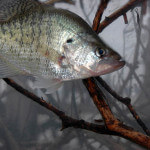Editor’s Note: Successful deer hunting involves problem solving and decision making. But to consistently succeed, you must know when to change strategies and why to abandon a hunt plan and have the flexibility to institute those changes. That’s what the deer-hunting pros do. Weather, hunting pressure, the availability of food, the rut and your intuition all determine how, when and where you should hunt.
Some years ago I stalk-hunted at White Oak Plantation near Tuskegee, Alabama, and the area of about 500 acres I had to hunt, had a road surrounding it. Since I had three days to hunt, I decided to stalk the road the first day to determine as much as I could about the perimeter of the property. Then I could make a more-informed decision about the most-productive places to hunt.
 My hunt began in the early afternoon. I slowly slipped down the road until nearly dark. When I arrived at the backside of the property, I found good deer habitat like hardwood bottoms, thickets and clear cuts. As the light faded, I had to quickly walk down this part of the road rather than slowly stalk it as I normally would. Back at camp that night, I began to think about my next day’s hunt. More than likely everyone who hunted that same block of woods in the afternoon had had to hurry down the backside of the property and not hunt it thoroughly. If the hunters went down the road in the morning, they wouldn’t reach the backside of the property until 10:00 or 11:00 am. Since all the hunters went into the property the same way and travelled down the road in the same direction, I assumed the land’s backside probably had had the least amount of hunting pressure at first light.
My hunt began in the early afternoon. I slowly slipped down the road until nearly dark. When I arrived at the backside of the property, I found good deer habitat like hardwood bottoms, thickets and clear cuts. As the light faded, I had to quickly walk down this part of the road rather than slowly stalk it as I normally would. Back at camp that night, I began to think about my next day’s hunt. More than likely everyone who hunted that same block of woods in the afternoon had had to hurry down the backside of the property and not hunt it thoroughly. If the hunters went down the road in the morning, they wouldn’t reach the backside of the property until 10:00 or 11:00 am. Since all the hunters went into the property the same way and travelled down the road in the same direction, I assumed the land’s backside probably had had the least amount of hunting pressure at first light.
Also because of the availability of plenty of acorns in the region for the deer to feed on and numbers of briar thickets and cut-overs where the deer could bed, I decided the most deer movement should occur on the backside of the property at daylight when the deer moved out of the thickets and started to feed on the acorns. The animals fed from daylight until 8:00 or 9:00 am and then returned to the thickets before the hunters sneaked down the road at 10:00 or 11:00 am. Instead of stalking down the road the next morning as most hunters had done, I went to the backside of the property before daylight to a stand site I had picked out the afternoon before on the edge of a creek bottom in an acorn flat. While on my stand waiting on the first rays of daylight, I had an uncomfortable feeling I hadn’t taken a stand in the best place.
 Most hunters when stand hunting do not sit in one spot long enough to take a deer. However, I didn’t want to move simply for the sake of moving. I’d also planned to hunt a transition area where a 3-year-old clear cut dropped off a hill into a hardwood bottom bordered by a stream at some time during my three-day stay. A narrow strip of woods there formed a bottleneck and provided a productive feeding site – the hardwood bottom – close to a bedding site – the clear cut. Because I’d learned the intuitive side of my brain often made better decisions than the reasoning side of my brain, I often followed my hunches when hunting. On this day, I left the creek bottom just as day broke and hurried to the edge of the clear cut. This time the spot felt right.
Most hunters when stand hunting do not sit in one spot long enough to take a deer. However, I didn’t want to move simply for the sake of moving. I’d also planned to hunt a transition area where a 3-year-old clear cut dropped off a hill into a hardwood bottom bordered by a stream at some time during my three-day stay. A narrow strip of woods there formed a bottleneck and provided a productive feeding site – the hardwood bottom – close to a bedding site – the clear cut. Because I’d learned the intuitive side of my brain often made better decisions than the reasoning side of my brain, I often followed my hunches when hunting. On this day, I left the creek bottom just as day broke and hurried to the edge of the clear cut. This time the spot felt right.
Part of versatility is willingly changing plans even though reason dictates you should take another course. A hunter must learn to listen to his instincts and make decisions based on his intuition. A bass fisherman often realizes when he throws a lure next to one specific lily pad that a bass will strike the bait at that spot. Many deer hunters have learned to tap that same type of intuitive sense. It enables them to find just the right spot in the woods to take a stand.

 To learn more about deer hunting, go to John E. Phillips’ books and learn the tactics small property owners have used successfully by checking out John E. Phillips’s book, “How to Hunt and Take Big Buck Deer on Small Properties” at https://www.amazon.com/dp/B00OOC2T0Y#, available in Kindle, print and Audible versions. To receive your free book on “How to Make Venison Jerky,” go to https://www.emailmeform.com/builder/form/Ece3UZVcOo52cKPJcL.
To learn more about deer hunting, go to John E. Phillips’ books and learn the tactics small property owners have used successfully by checking out John E. Phillips’s book, “How to Hunt and Take Big Buck Deer on Small Properties” at https://www.amazon.com/dp/B00OOC2T0Y#, available in Kindle, print and Audible versions. To receive your free book on “How to Make Venison Jerky,” go to https://www.emailmeform.com/builder/form/Ece3UZVcOo52cKPJcL.
















